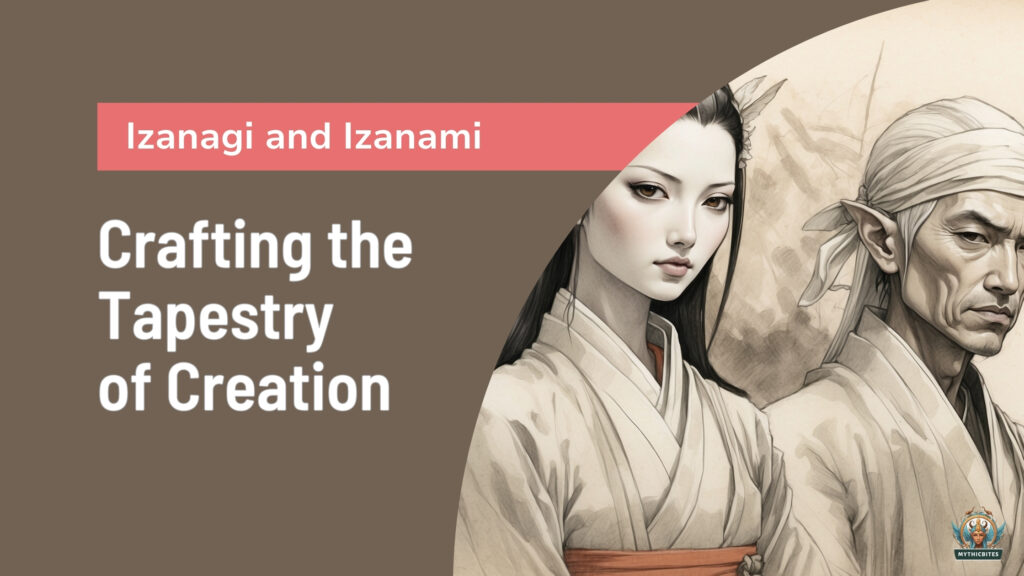Mythology love stories
Izanagi and Izanami: Crafting the Tapestry of Creation
In the rich tapestry of Japanese lore, the creation myth finds its roots in the tumultuous love story of Izanagi and Izanami. From the birth of deities to the Shinto symbolism interwoven in their union, their saga becomes a mesmerizing canvas painted with divine sparks and earthly desires. Join us on a journey through the captivating myth of Izanagi and Izanami, where creation and catastrophe converge in the intricate dance of gods.
 The Divine Union:
The Divine Union:Izanagi, the god of creation and life, and Izanami, the goddess of creation and death, stand at the genesis of Japanese mythology. The Kojiki, one of Japan’s oldest texts, narrates their story, detailing the cosmic dance that led to the birth of the Japanese archipelago and its divine inhabitants. As siblings and consorts, Izanagi and Izanami become the architects of creation, setting the stage for a tale that echoes through the ages.
The Birth of Deities:

Standing on the heavenly bridge Ame-no-ukihashi, Izanagi and Izanami stir the sea beneath with the sacred jewel-tipped spear named Ame-no-nuboko. As droplets fell from the spear, they formed the first islands of Japan. Following this celestial act, the divine couple consummated their union, giving birth to a pantheon of gods, including the elemental deities and the islands themselves. This momentous union, however, foreshadowed the tumultuous events that would later unfold.
 The Catastrophe and Descent:
The Catastrophe and Descent:Tragedy befalls the divine couple when Izanami succumbs to mortal injuries during the birth of the fire god, Kagutsuchi. In grief, Izanagi journeys to Yomi, the underworld, to retrieve his beloved Izanami. Yet, upon encountering her, he discovers that she has become a resident of the land of the dead. The gruesome sight of Izanami’s decay prompts Izanagi to flee, sealing the entrance to Yomi with a massive boulder.

Shinto Symbolism:
The myth of Izanagi and Izanami is replete with Shinto symbolism, offering profound insights into the cyclical nature of life, death, and creation. The ritualistic actions of the divine couple, from the purification before their union to the cleansing after Izanami’s descent into Yomi, echo the Shinto practices ingrained in Japanese spirituality. The symbolism of creation, destruction, and renewal mirrors the seasonal changes and the perpetual cycle of life.
 Divine Sparks and Earthly Desires:
Divine Sparks and Earthly Desires:Izanagi and Izanami’s union encapsulates the divine sparks that set the cosmos in motion, mingling with earthly desires that shape the world. The elemental forces and deities born from their union personify the dynamic interplay between the ethereal and the terrestrial, forging a connection between the divine and human realms.
The myth of Izanagi and Izanami stands as a cornerstone in Japanese mythology, a tale that transcends time and culture. Their love story, from the celestial creation to the tragic descent into the underworld, embodies the intricate dance of gods shaping the world. Through their divine union, Izanagi and Izanami paint a narrative that reverberates with Shinto symbolism and the profound mysteries of creation, catastrophe, and the eternal cycle of life. In their cosmic dance, they continue to inspire contemplation and reverence, leaving an indelible mark on the cultural and spiritual tapestry of Japan.

